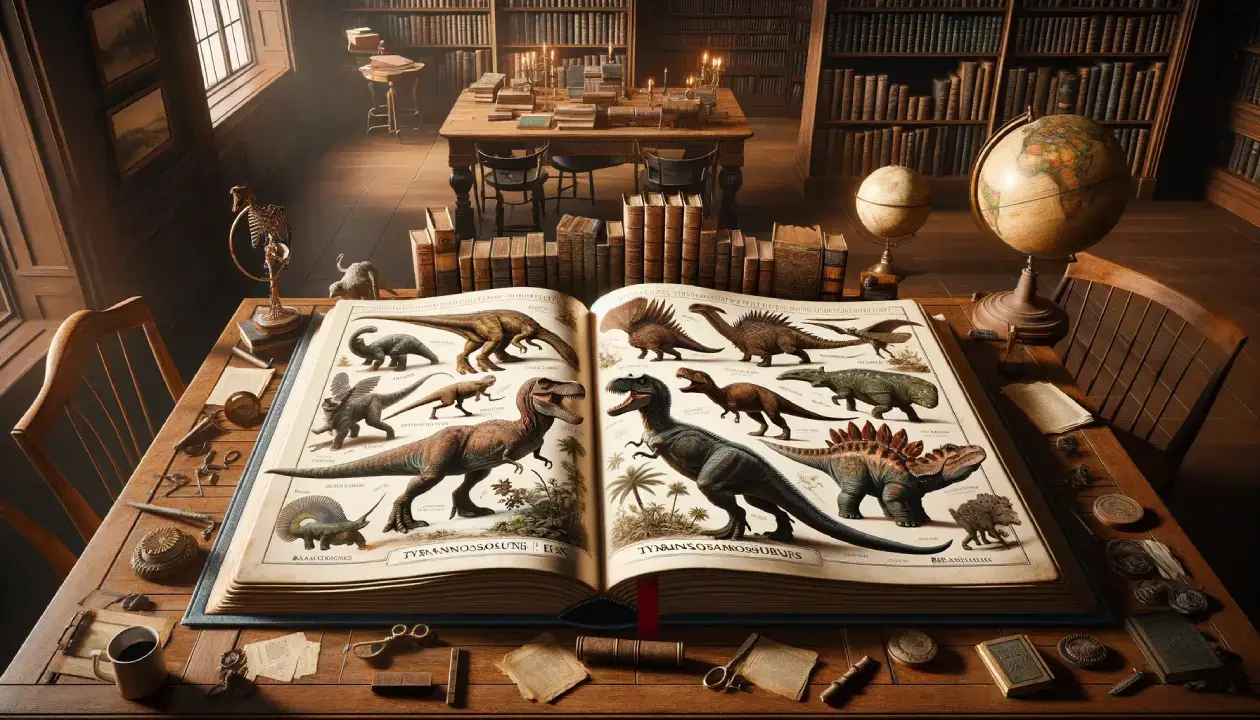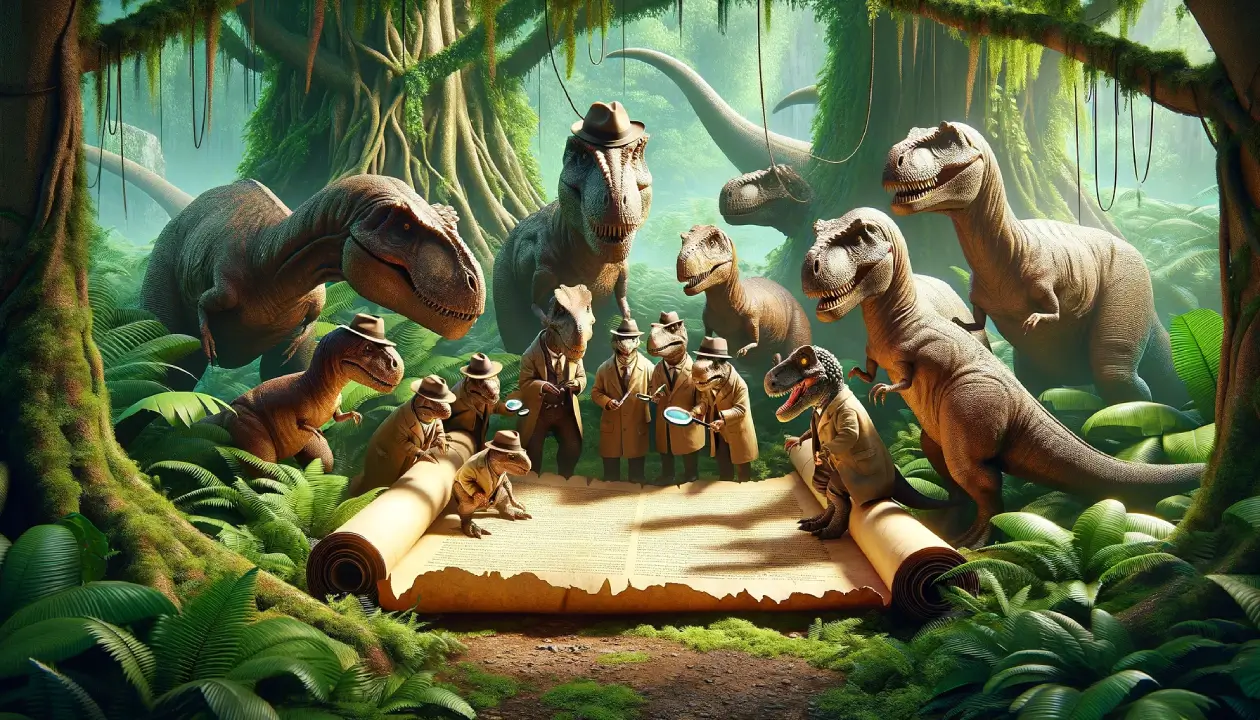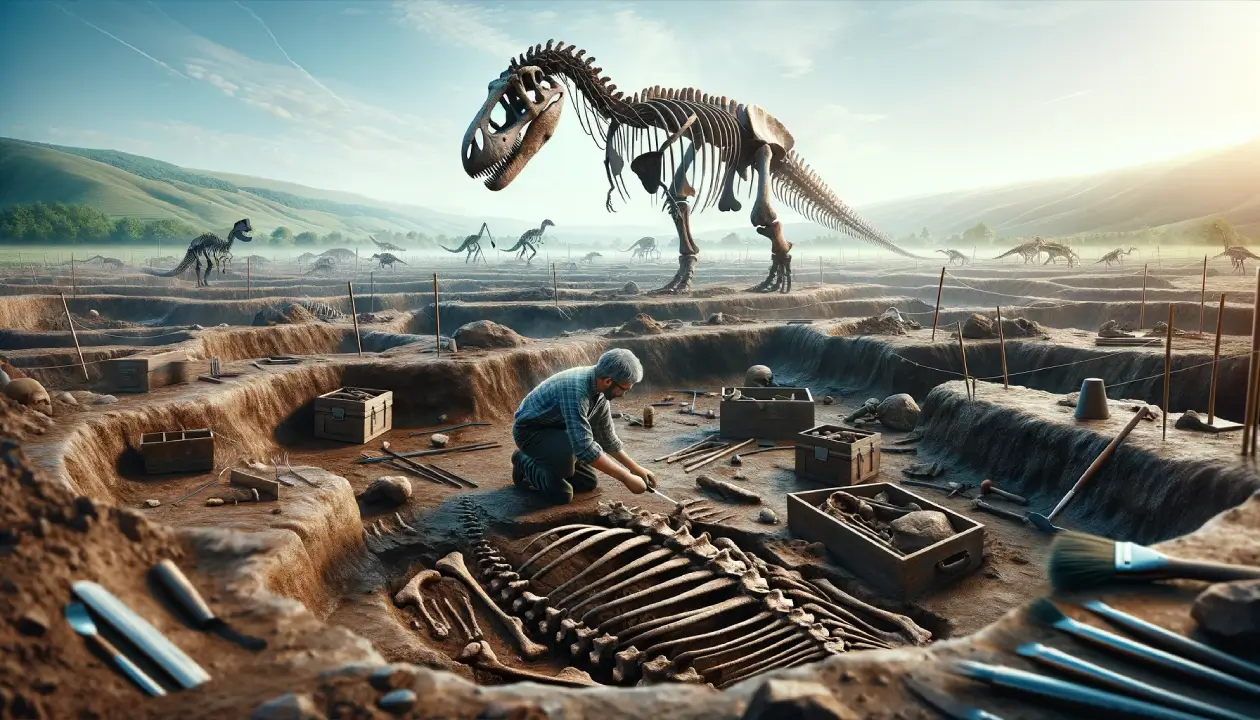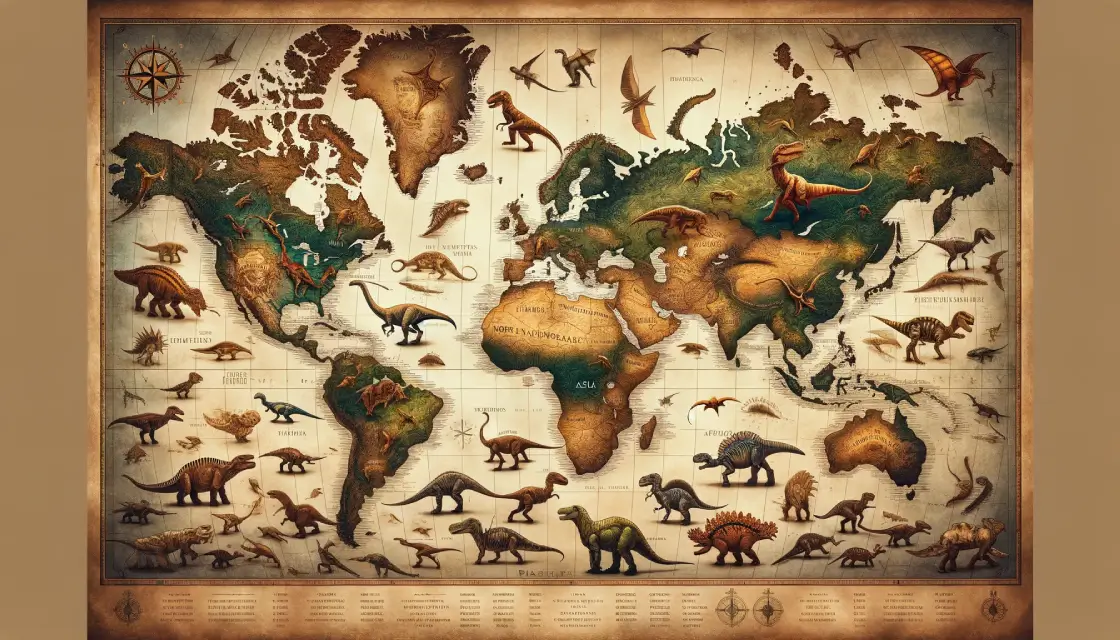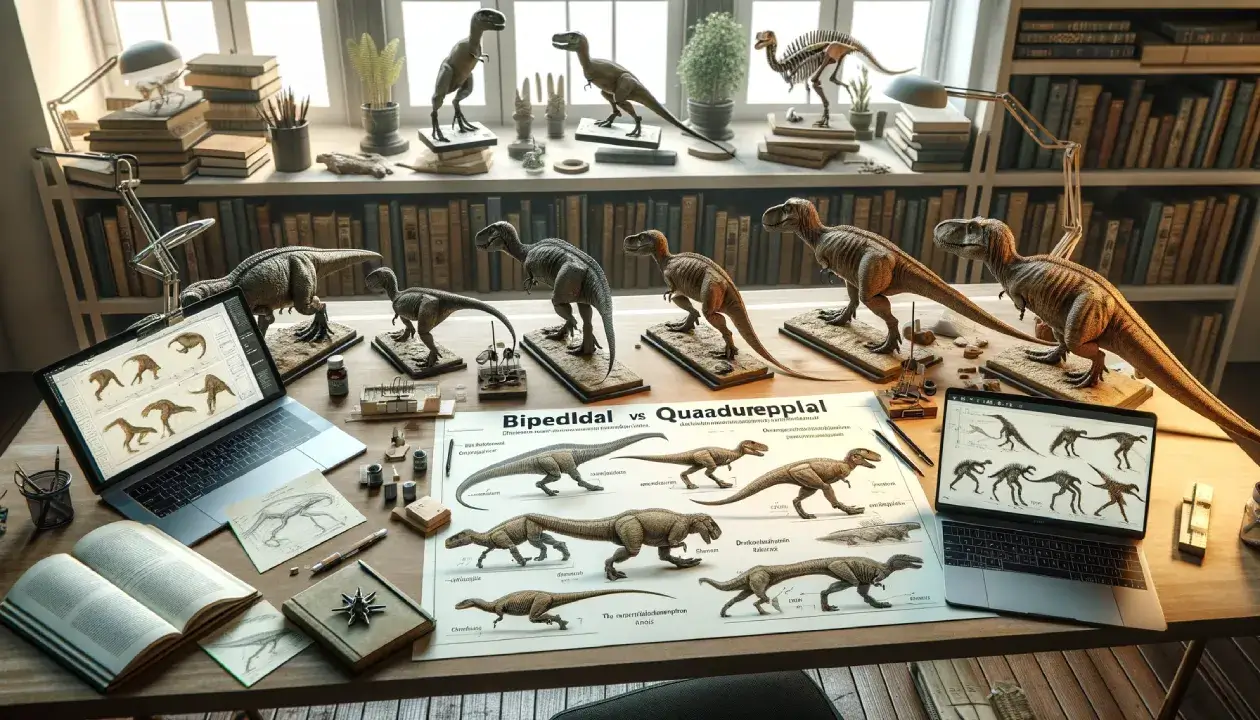Dinosaurs are a diverse group of prehistoric reptiles that dominated the Mesozoic Era over 150 million years ago. Understanding what dinosaurs are is important because these ancient creatures give us a window into past eras and allow us to learn about evolution and biology.
Dinosaurs captivate our imaginations, from children who love T-rex to scientists piecing together clues about these enigmatic animals. But exactly what are dinosaurs? What defines them and sets them apart from other prehistoric creatures? This article will provide a basic overview of the origins, types, characteristics and reign of the dinosaurs.
Key Takeaways
| Question | Answer |
|---|---|
| What are dinosaurs? | Dinosaurs are a diverse group of prehistoric reptiles that lived in the Mesozoic Era and descended from archosaurs. |
| How are dinosaurs defined? | Dinosaurs are scientifically defined as descendants of the common ancestor of Triceratops and modern birds. They walked upright on erect limbs with bird-like hips. |
| When did dinosaurs live? | Dinosaurs lived during the Mesozoic Era from around 230 million years ago to 66 million years ago. |
| What periods made up the Dinosaur Era? | The Triassic, Jurassic, and Cretaceous periods make up the Mesozoic Era when dinosaurs lived and thrived. |
| Where did dinosaurs originate? | The earliest dinosaur fossils are found in South America which was part of the supercontinent Pangaea, where dinosaurs originated. |
| What are the main dinosaur groups? | The two main orders are saurischians like sauropods and theropods, and ornithischians like Triceratops and Stegosaurus. |
| What traits defined dinosaurs? | Dinosaurs had hollow bones, upright posture, S-curved necks, rapid growth rates, and some were likely warm-blooded. |
| How big were dinosaurs? | Dinosaurs ranged hugely in size from 100+ ton sauropods to turkey-sized compsognathids. |
| What did dinosaurs eat? | Herbivorous dinosaurs ate plants while carnivorous ones ate meat. Omnivorous diets were also likely common. |
What is ‘Dinosauria’?
Ever wondered where the word ‘dinosaur’ comes from? It was first called ‘Dinosauria’ way back in 1842 by a smart scientist named Sir Richard Owen. Let’s find out what this cool word means and how Sir Richard came up with it!
How the word ‘Dinosauria’ Was Born
‘Dinosauria’ is a mix of two Greek words. ‘Deinos’ means terrible (but in a cool way, like awesome), and ‘sauros’ means lizard. Imagine calling dinosaurs ‘terrible lizards’ – pretty awesome, right? Sir Richard Owen, who was really good at studying bones and fossils, saw that these giant bones weren’t just from big lizards. They were something special and different.
Sir Richard’s idea of ‘Dinosauria’ changed how everyone thought about these giant creatures. He noticed they had special features that made them different from other animals that lived a long time ago. Thanks to him, we started to learn a lot more about dinosaurs, and we’re still learning new things today!
The origin of Dinosaurs
Dinosaurs first appeared during the Triassic Period over 230 million years ago (228 to 208 million years ago). They evolved from archosaurs, ancestors that included crocodile-like reptiles.
Dinosaurs are part of a lineage that diverged onto a separate evolutionary branch around 247 million years ago in the Early Triassic. Key developments leading to dinosaurs include:
- Moving from a sprawling to erect limb posture
- Progressively more efficient digestion and metabolism
- Improved respiratory systems
There is evidence that early dinosaurs were omnivorous or even herbivorous. Dinosaur diversity increased rapidly during the Late Triassic, setting the stage for dominance in the Jurassic.
Fossil evidence shows that dinosaurs originated in the supercontinent Pangaea, which included modern day South America, Africa, and parts of Eurasia. Theoldest known dinosaur fossils have been found in Argentina and Brazil in South America.
Types of Dinosaurs
Dinosaurs are divided into two main orders based on hip structure:
- Saurischia (“lizard-hipped”) – Includes sauropods with long necks and tails and theropods like T-rex.
- Ornithischia (“bird-hipped”) – Includes armored dinosaurs like stegosaurs and horned ceratopsians like Triceratops.
Major dinosaur types include:
- Sauropods – Large, long-necked herbivores like Brontosaurus. Largest land animals ever.
- Theropods – Carnivorous, bipedal dinosaurs including T-rex and raptors. Many had feathers.
- Ornithopods – Plentiful herd herbivores like Iguanodon with beaks for grazing.
- Ankylosaurs – Heavily armored and plated quadrupeds like Ankylosaurus.
- Ceratopsians – Horned dinosaurs like Triceratops notable for neck frills.
- Pachycephalosaurs – Bipedal bone-headed dinos including Pachycephalosaurus.
| Dinosaur Group | Diet | Body Type | Distinctive Features | Example Genera |
|---|---|---|---|---|
| Sauropods | Herbivore | Quadrupedal | Very large, long neck and tail, columnar legs | Apatosaurus, Brachiosaurus |
| Theropods | Carnivore | Bipedal | Sharp teeth and claws, some with feathers | Tyrannosaurus, Velociraptor |
| Ornithopods | Herbivore | Bipedal/Quadrupedal | Beaked, some with cheek batteries | Iguanodon, Parasaurolophus |
| Ankylosaurs | Herbivore | Quadrupedal | Heavily armored with plates and spikes | Ankylosaurus, Euoplocephalus |
| Ceratopsians | Herbivore | Quadrupedal | Horned face, neck frill | Triceratops, Styracosaurus |
| Pachycephalosaurs | Herbivore | Bipedal | Thick skull dome | Pachycephalosaurus, Stegoceras |
Characteristics of Dinosaurs
While a diverse group, dinosaurs share common physical and biological traits including:
- Bone structure – Dinosaurs had bones with air chambers and were lighter than other reptiles.
- Limbs and posture – Legs were under the body rather than sprawling outward. Many were bipeds.
- Skin – Most dinosaurs were covered in scales, while some maniraptorans had primitive feathers.
- Fast growth – Dinosaurs grew rapidly and reached maturity in 5-10 years.
- Warm-bloodedness – Many dinosaurs were likely warm-blooded to some degree, unlike modern reptiles.
Size and Shape Variations
Dinosaurs came in all shapes and sizes. Sauropods were the largest at over 30 meters long and 100 tonnes. Compsognathus was turkey-sized at 0.5 meters long. Body shapes included:
- Quadrupedal – Four-legged plant eaters like Stegosaurus and Apatosaurus.
- Bipedal – Two-legged theropods like T-rex and Deinonychus plus many ornithopods.
- Armored quadrupeds – Heavily plated ankylosaurs and stegosaurs.
Diet and Feeding Habits
Dinosaurs can be divided into two main diet types:
- Herbivores – Plant eating dinosaurs with specialized teeth, jaws, and digestive systems. Sauropods, ornithopods, stegosaurs etc.
- Carnivores – Flesh eating theropods like T-rex with blade-like teeth and claws for hunting.
Omnivorous dinosaurs with mixed diets were likely common as well. Specific feeding styles varied widely between dinosaur groups and species.
The Dinosaur Era
| Period | Years Ago | Key Events |
|---|---|---|
| Triassic | 228-200 million | Dinosaurs emerge and diversify |
| Jurassic | 200-145 million | Age of giant sauropods, dinosaur dominance |
| Cretaceous | 145-66 million | Flowering plants, continents drift, end of dinosaurs |
The Mesozoic Era when dinosaurs lived is divided into three periods:
- Triassic (228 – 200 million years ago) – Dinosaurs first emerged and diversified in the Late Triassic. Other archosaurs like pterosaurs were their contemporaries.
- Jurassic (200 – 145 million years ago) – The age of giant sauropods. Dinosaurs became dominant on land worldwide.
- Cretaceous (145 – 66 million years ago) – The last age of dinosaurs. Flowering plants evolved and continents drifted apart.
Dinosaurs lived on every continent including Antarctica for over 150 million years. They filled diverse niches as herd herbivores, armored tanks, apex predators, and more.
The End of the Dinosaur Era
The age of dinosaurs ended abruptly 66 million years ago with a mass extinction event likely caused by an asteroid impact, volcanic eruptions, climate change, or some combination of factors.
75% of plant and animal species on Earth perished, including all non-avian dinosaurs. Mammals survived and diversified in the wake of this global catastrophe.
Conclusion
Dinosaurs were a varied group of reptiles that walked on land and descended from archosaurs. They lived more than 150 million years ago in the Mesozoic Era and dominated terrestrial ecosystems globally in this time.
While the dinosaurs ultimately went extinct, they continue to fascinate us and give insight into prehistoric times. Their legacy lives on today in their avian relatives – the birds.
This article provided a basic dinosaur overview. To learn more on specific eras, types, famous dinosaurs, and cutting-edge discoveries, explore the rest of the dinosaur directory.

